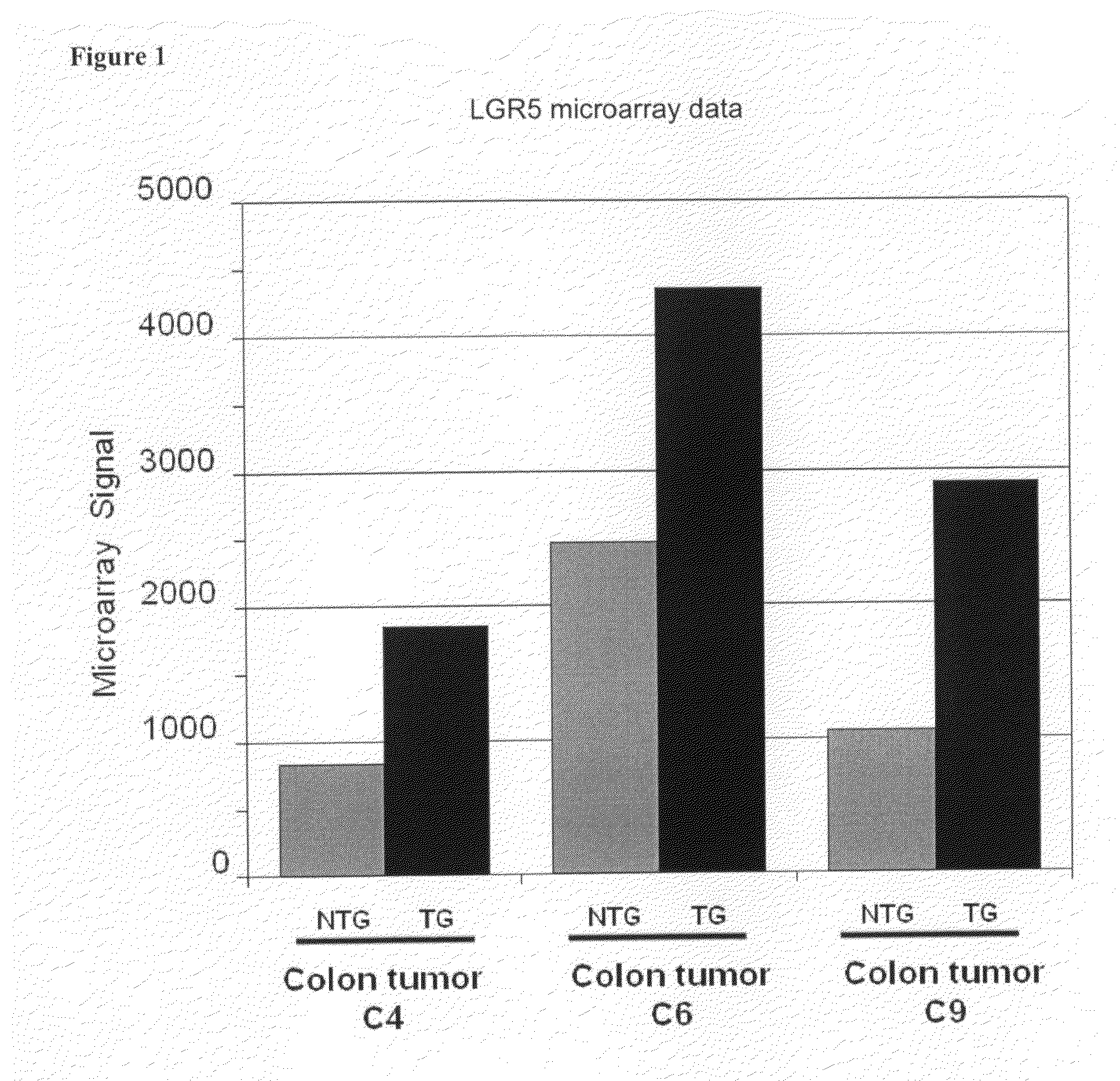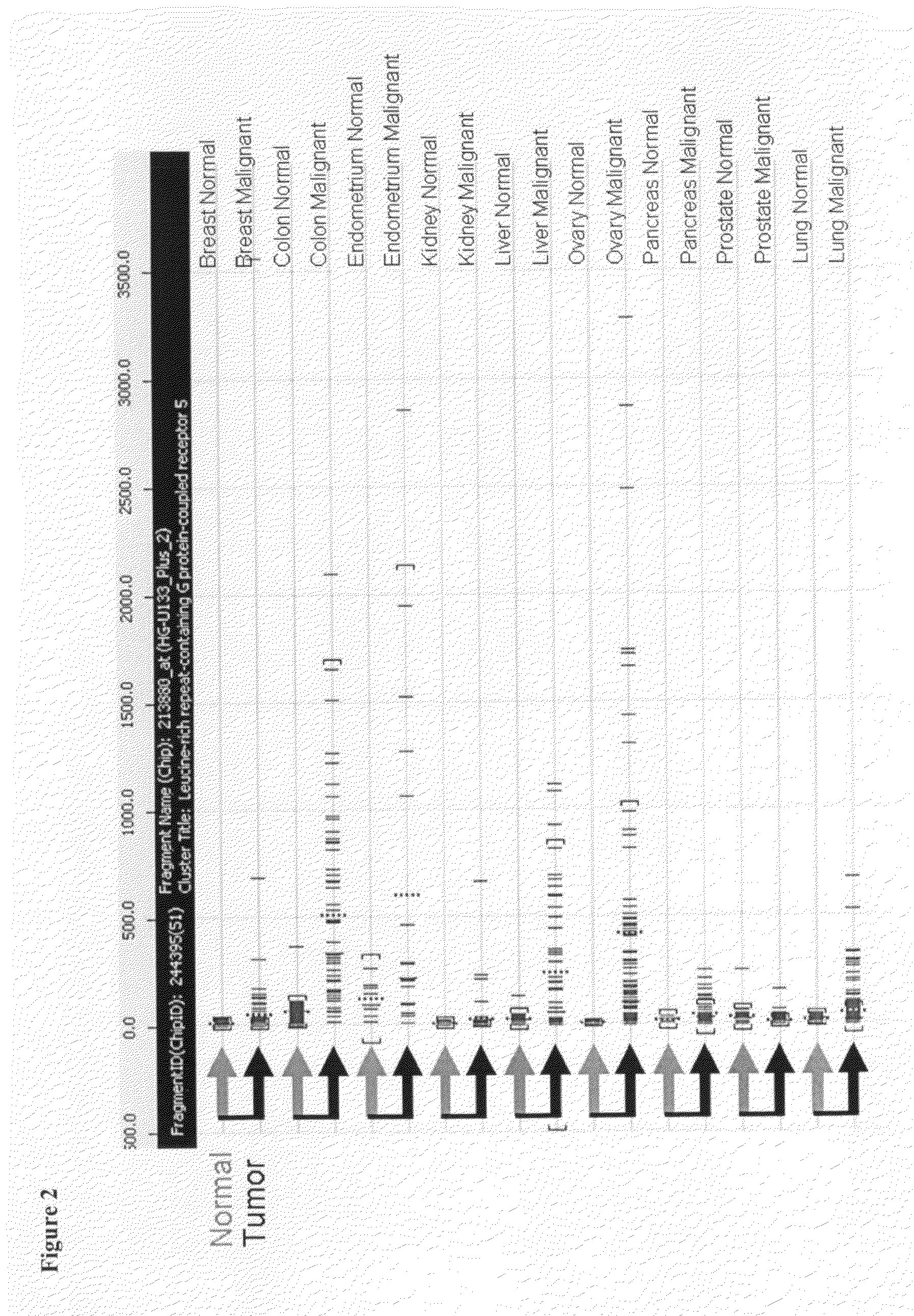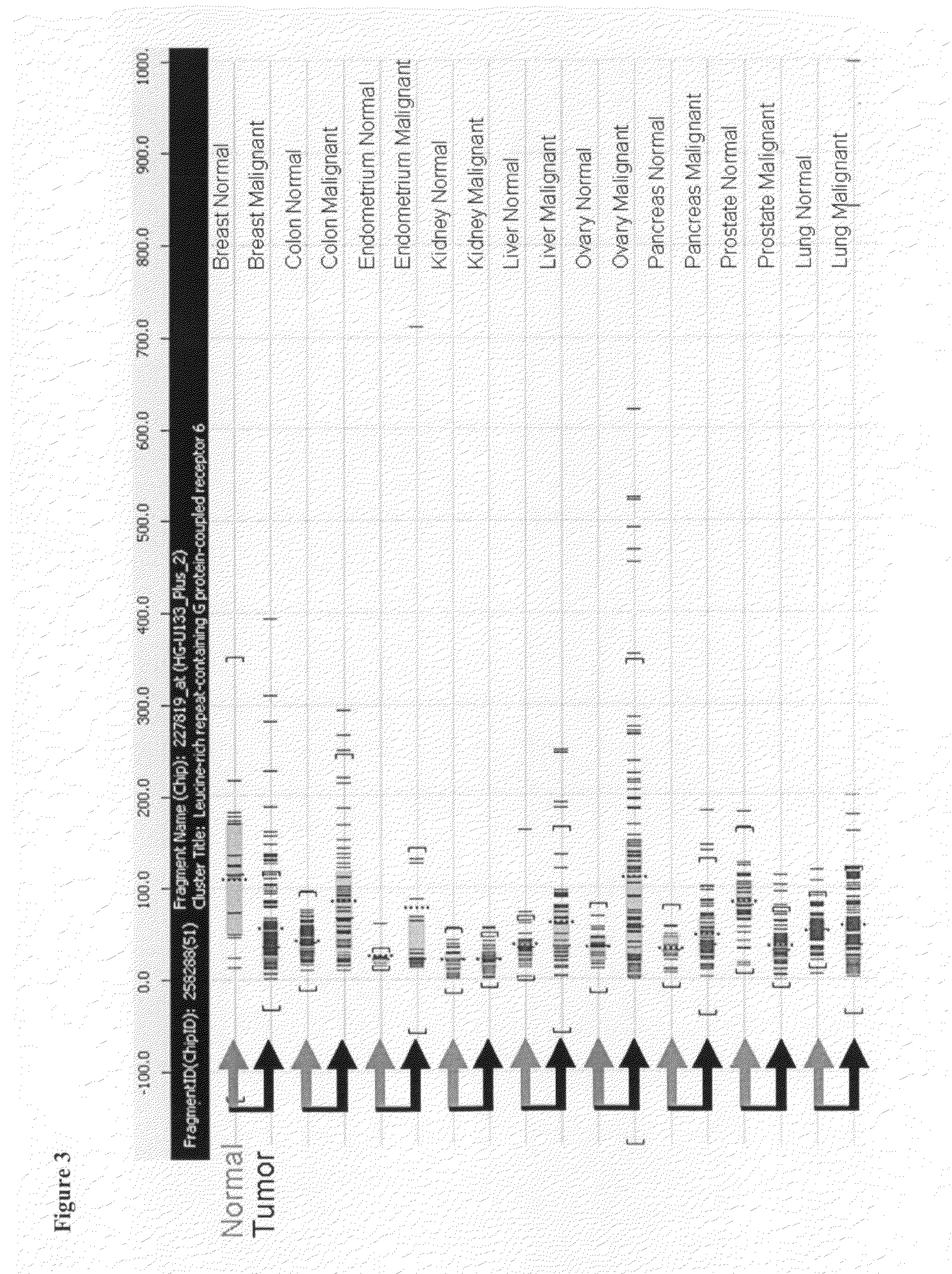Compositions and Methods for Treating and Diagnosing Cancer
a cancer and composition technology, applied in the field of cancer, can solve the problems of breast cancer remaining a leading cause of death in middle-aged women, metastatic breast cancer still an incurable disease, and mortality rates have decreased
- Summary
- Abstract
- Description
- Claims
- Application Information
AI Technical Summary
Benefits of technology
Problems solved by technology
Method used
Image
Examples
example 1
LGR5 is Over-Expressed in Cancer Stem Cells Relative to Non-Tumorigenic Tumor Cells
[0277]Recently it has been demonstrated that malignant human breast tumors harbor a small, distinct population of cancer stem cells that are enriched for the ability to form tumors in immunodeficient mice. An ESA+, CD44+, CD24− / low, Lin− cell population was found to be 50-fold enriched for tumorigenic breast tumor cells compared to unfractionated tumor cells (Al-Hajj et al., 2003, PNAS 100:3983-8). A similar population of ESA+CD44+ cancer stem cells has been identified in colon cancers (U.S. patent application Ser. No. 11 / 591,019). Microarray analysis of FACS sorted tumorigenic cancer stem cells compared to non-tumorigenic tumor cells has revealed a number of cancer stem cell markers upregulated in cancer stem cells relative to non-tumorigenic tumor cells. (U.S. patent application Ser. Nos. 10 / 864,207 and 11 / 050,282).
[0278]These microarray data also revealed that LGR5 is overexpressed in colon cancer ...
example 2
RSPO1 Activates Beta-Catenin Signaling Via LGR5
[0281]This example describes the activation of beta-catenin signaling by RSPO1 via LGR5.
[0282]In certain embodiments, an 8×TCF luciferase reporter assay demonstrated RSPO1 activates expression of a beta-catenin responsive promoter. A RSPO1-Fc construct was generated using standard recombinant DNA techniques. Specifically, full-length, human RSPO1 was ligated in-frame to human Fc and the recombinant RSPO1-Fc protein expressed in insect cells using baculovirus. Recombinant RSPO1-Fc was then purified from the conditioned insect medium using protein A chromatography. HEK 293 cells stably transfected with an 8×TCF luciferase reporter were exposed to RSPO1-Fc at increasingly higher concentrations for a total of twelve hours. Reporter cells showed greater luciferase activity in response to increasing concentrations of RSPO1 (FIG. 4).
[0283]The effect of soluble LGR5 on RSPO1 activation of the 8×TCF beta-catenin responsive promoter was assessed ...
example 3
Generation of Anti-LGR5 Antibodies
[0288]Example 2 identifies an alternative pathway to beta-catenin activation via RSPO1 and LGR5. Blocking the interaction between RSPO and LGR proteins, therefore, could disrupt over-activation of beta-catenin signaling associated with tumorigenicity. In certain embodiments, antibodies against a LGR protein act as a cancer therapeutic by disrupting LGR signaling. In certain embodiments, antibodies against LGR5 disrupt the interaction between RSPO1 and LGR5.
[0289]This example describes the generation of antibodies against LGR5. Similar techniques are used to generate antibodies against LGR4 and LGR6.
[0290]Antigen Production
[0291]In certain embodiments, recombinant full-length or partial protein fragments of human LGR5 or an extracellular domain of human LGR5 are generated as antigens for antibody production. Standard recombinant DNA technology is used to isolate polynucleotides encoding LGR5. These polynucleotides are then ligated in-frame to protein...
PUM
| Property | Measurement | Unit |
|---|---|---|
| Tm | aaaaa | aaaaa |
| temperature | aaaaa | aaaaa |
| temperature | aaaaa | aaaaa |
Abstract
Description
Claims
Application Information
 Login to View More
Login to View More - R&D
- Intellectual Property
- Life Sciences
- Materials
- Tech Scout
- Unparalleled Data Quality
- Higher Quality Content
- 60% Fewer Hallucinations
Browse by: Latest US Patents, China's latest patents, Technical Efficacy Thesaurus, Application Domain, Technology Topic, Popular Technical Reports.
© 2025 PatSnap. All rights reserved.Legal|Privacy policy|Modern Slavery Act Transparency Statement|Sitemap|About US| Contact US: help@patsnap.com



